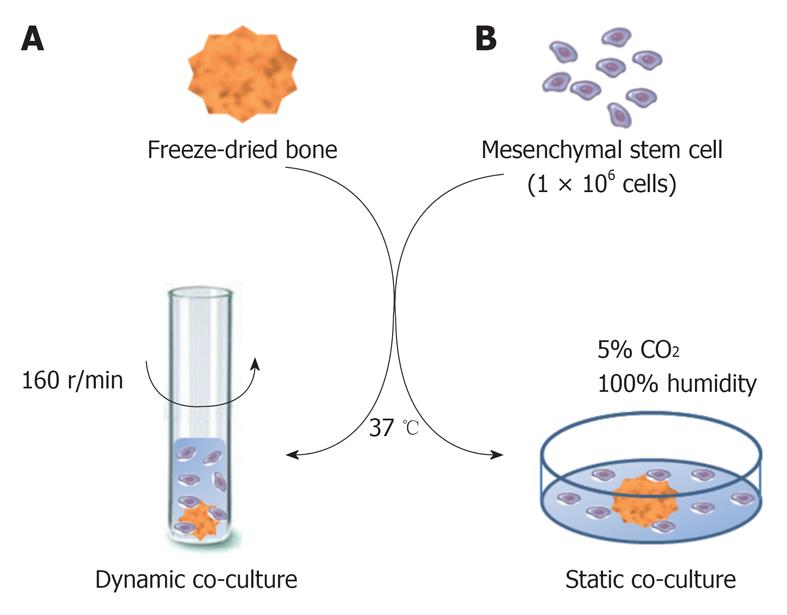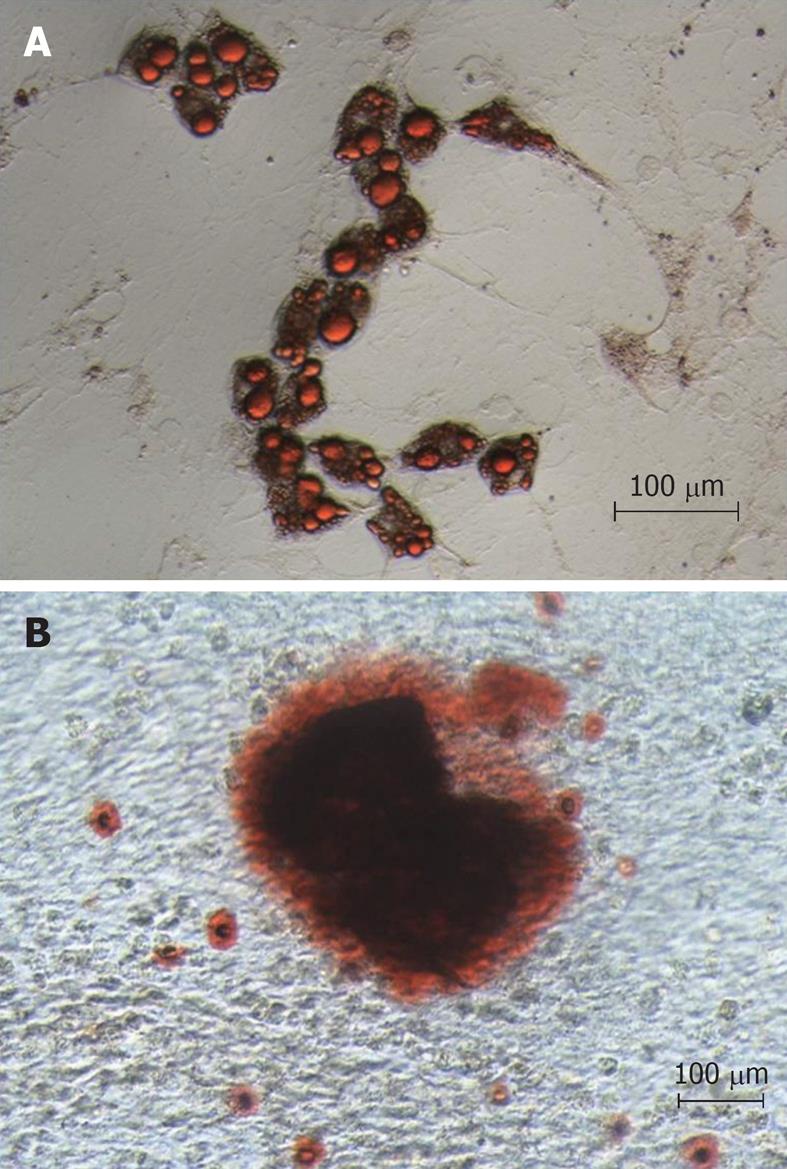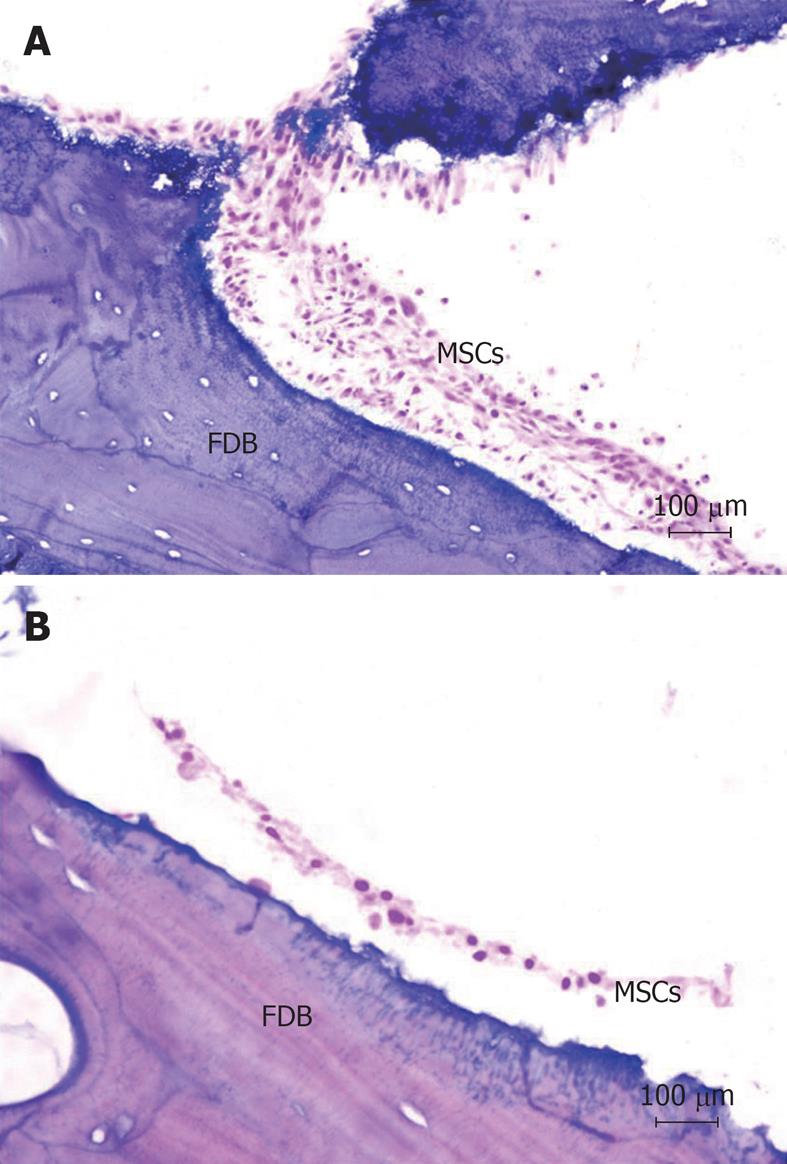Copyright
©2012 Baishideng.
World J Stem Cells. Feb 26, 2012; 4(2): 9-16
Published online Feb 26, 2012. doi: 10.4252/wjsc.v4.i2.9
Published online Feb 26, 2012. doi: 10.4252/wjsc.v4.i2.9
Figure 1 Illustration of co-cultures of mesenchymal stem cells and freeze-dried bone.
A: Mesenchymal stem cells (MSCs) were co-cultured with freeze-dried bone (FDB) by a dynamic method at 37 °C with agitation (160 r/min) for 24 h; B: MSCs were co-cultured with FDB in a static method at 37 °C in a humidified atmosphere containing 5% CO2.
Figure 2 Differentiation potential of mesenchymal stem cells.
A: Adipogenic differentiation detected by Oil red that stains lipid vacuoles; B: Osteogenic differentiation detected by Alizarin Red that stains deposit of calcium.
Figure 3 Analysis of cell adhesion (pixels) on bone grafts.
Mesenchymal stem cells were co-cultured with freeze-dried bone fragments by two different cultivation methods: dynamic and static co-culture; and in two different groups: cells and bone (CB) and cells, bone and matrix (CBM). After 24 h of culture, there was a significant difference between the two cultivation methods. The dynamic co-culture demonstrated greater cell adhesion on the bone surface than the static co-culture. Three independent experiments were performed for each co-culture system. aP < 0.05.
Figure 4 Histological analysis of the interaction between mesenchymal stem cells and freeze-dried bone in two different cultivation systems (HE stain, × 200).
A: Mesenchymal stem cells (MSCs) adhered on the bone surface after dynamic culture. The dynamic co-culture allowed the formation of multiple cell layers; B: MSCs adhered on the bone surface after static culture. There is no formation of multiple cell layers after static co-culture. FDB: Freeze-dried bone.
Figure 5 Cell viability after dynamic or static co-culture, measured by the exclusion method with Trypan Blue.
The cell viability ratio was assessed on days 0, 3 and 6 after cultures. On day 0, the cell proliferation potential in the dynamic system was higher than in the static system. Over days 0, 3 and 6 after dynamic system, there was a decrease in cell viability on bone matrix in prolonged non-dynamic culture. In the static system, the cell proliferation on day 6 was significantly lower than on day 3 and 0. Three independent experiments were performed for each co-culture system. aP < 0.05.
Figure 6 Morphological analysis by optical microscopy (× 100).
Formation of cell clusters after dynamic co-culture with freeze-dried bone.
- Citation: Gonçalves FDC, Paz AHDR, Lora PS, Passos EP, Cirne-Lima EO. Dynamic culture improves MSC adhesion on freeze-dried bone as a scaffold for bone engineering. World J Stem Cells 2012; 4(2): 9-16
- URL: https://www.wjgnet.com/1948-0210/full/v4/i2/9.htm
- DOI: https://dx.doi.org/10.4252/wjsc.v4.i2.9














